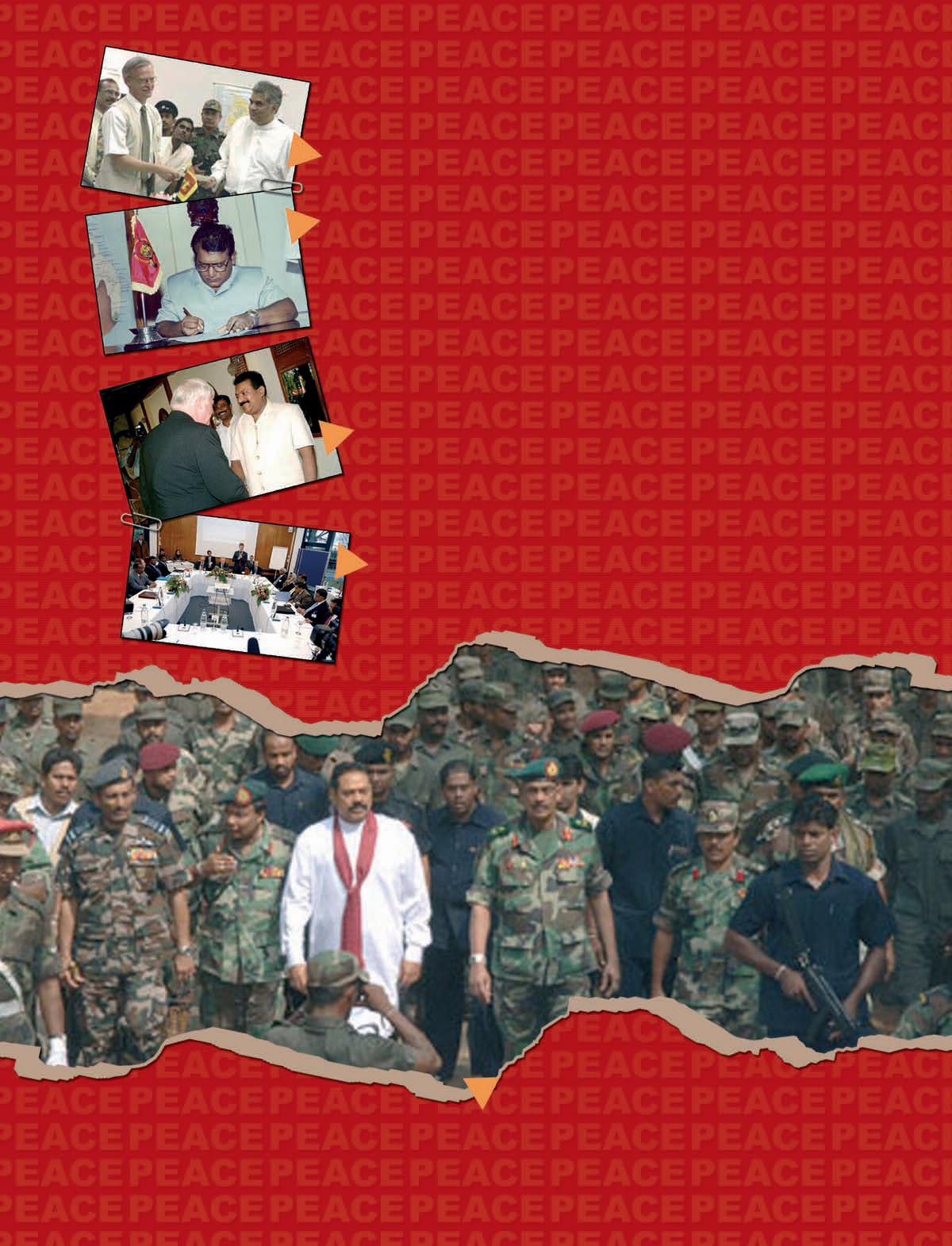 �The
central axiom of the
International Community that there is no
military solution to Sri Lanka�s conflict
has been asserted time and again. The
strategies pursued by the stakeholders (the
GoSL, LTTE and the Co-Chairs) have led to
the collapse of the CFA and endangered the
peace process� argues a new
publication
titled "Sri
Lanka's Endangered Peace Process and the Way
Forward " (ISBN
ISBN: 3-9523172-1-7 978-3-9523172-1-1)
by the
Centre for Just Peace and
Democracy (CJPD), a non-profit organization.
�The
central axiom of the
International Community that there is no
military solution to Sri Lanka�s conflict
has been asserted time and again. The
strategies pursued by the stakeholders (the
GoSL, LTTE and the Co-Chairs) have led to
the collapse of the CFA and endangered the
peace process� argues a new
publication
titled "Sri
Lanka's Endangered Peace Process and the Way
Forward " (ISBN
ISBN: 3-9523172-1-7 978-3-9523172-1-1)
by the
Centre for Just Peace and
Democracy (CJPD), a non-profit organization.
The CJPD publication examines the current stalemate in the conflict resolution process and concludes in the Way Forward -
" On 9th February 2007, Mahinda Rajapakse, told BBC News that:
"Today we realise we have made a mistake. Through the peace pact, we have demarcated areas called LTTE-controlled areas"
Amid the ongoing series of military offensives, the statement underscored Rajapakse�s commitment to dismantling the de facto Tamil State. Given its implications for domestic (i.e. southern) politics, it suggested moreover that he was confident a military victory over the LTTE was not only possible, but also imminent.
Then there is the policy position announced by the leader of the LTTE on 27 November 2006, declaring that
"The uncompromising stance of Sinhala chauvinism has left us with no other option but an independent state for the people of Tamil Eelam"
Although, the central axiom of the International Community that there is no military solution to Sri Lanka�s conflict has been asserted time and again, the strategies pursued by the stakeholders (the GoSL, LTTE and the Co-Chairs) have led to the collapse of the CFA and endangered the peace process.
Any efforts to build peace must, as visiting British Minister Tim Howell, pointed out in February 2007, be predicated on a stable ceasefire.
As the first few years of the CFA have amply demonstrated, it is possible to silence the guns. But history cannot be undone. In order for a credible and viable peace process to evolve, there will have to be attitudinal shifts, not just on the part of the GoSL and the LTTE, but also the international community. The initial optimism produced by the CFA foundered amongst what, in hindsight is plain to see, was a hurried effort in containing the LTTE.
In order to rule out a military solution, it becomes necessary to address the concerns of all parties (local and foreign), who clearly have a stake in the outcome.
Primarily the search for peace in Sri Lanka will have to involve exploring �imaginative associative structures whereby the Sinhalese and Tamil peoples can peacefully coexist, and freely associate and cooperate in certain vital spheres of common concern (and there are many), so that the welfare of both people can be safe-guarded and enhanced�
A hard copy of the 50 page publication can be obtained from the CJPD. Contact: [email protected]



